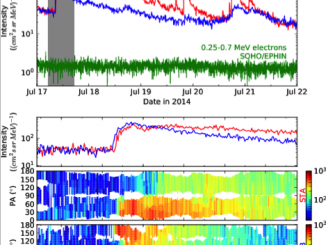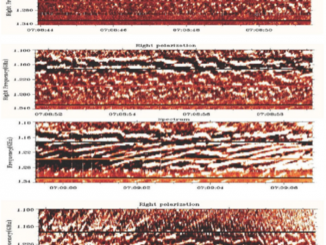Shock location and CME 3-D reconstruction of a solar type II radio burst with LOFAR
by P. Zucca et al.*
Type II radio bursts are the result of shocks in the solar atmosphere and they can be observed ranging from sub-metric to kilometric wavelengths (~400 MHz to ~0.4 MHz). Coronal mass ejections initiate most of the metric type II (m-type II) bursts. The region of a CME responsible for driving the shock might be different for each event and has not yet been comprehensively identified. Multiple scenarios have been suggested, […]



